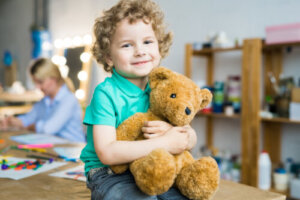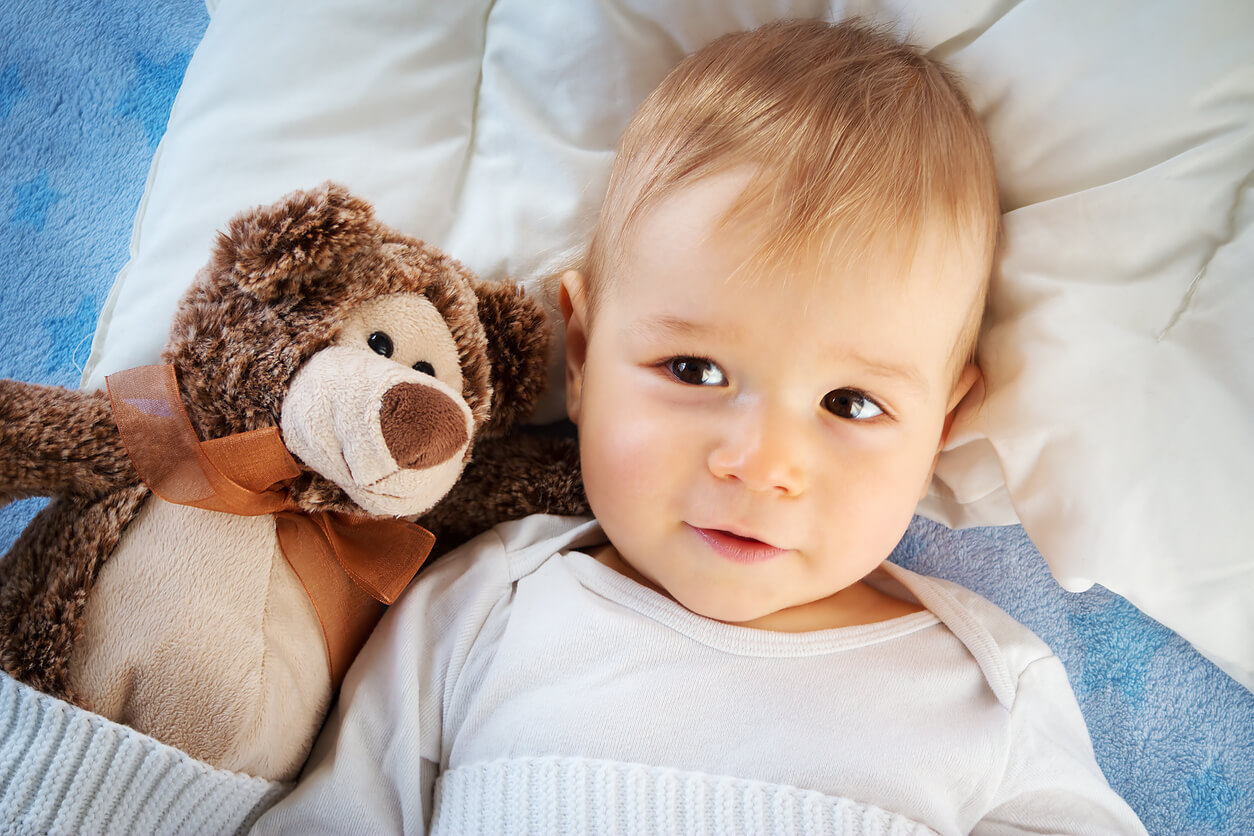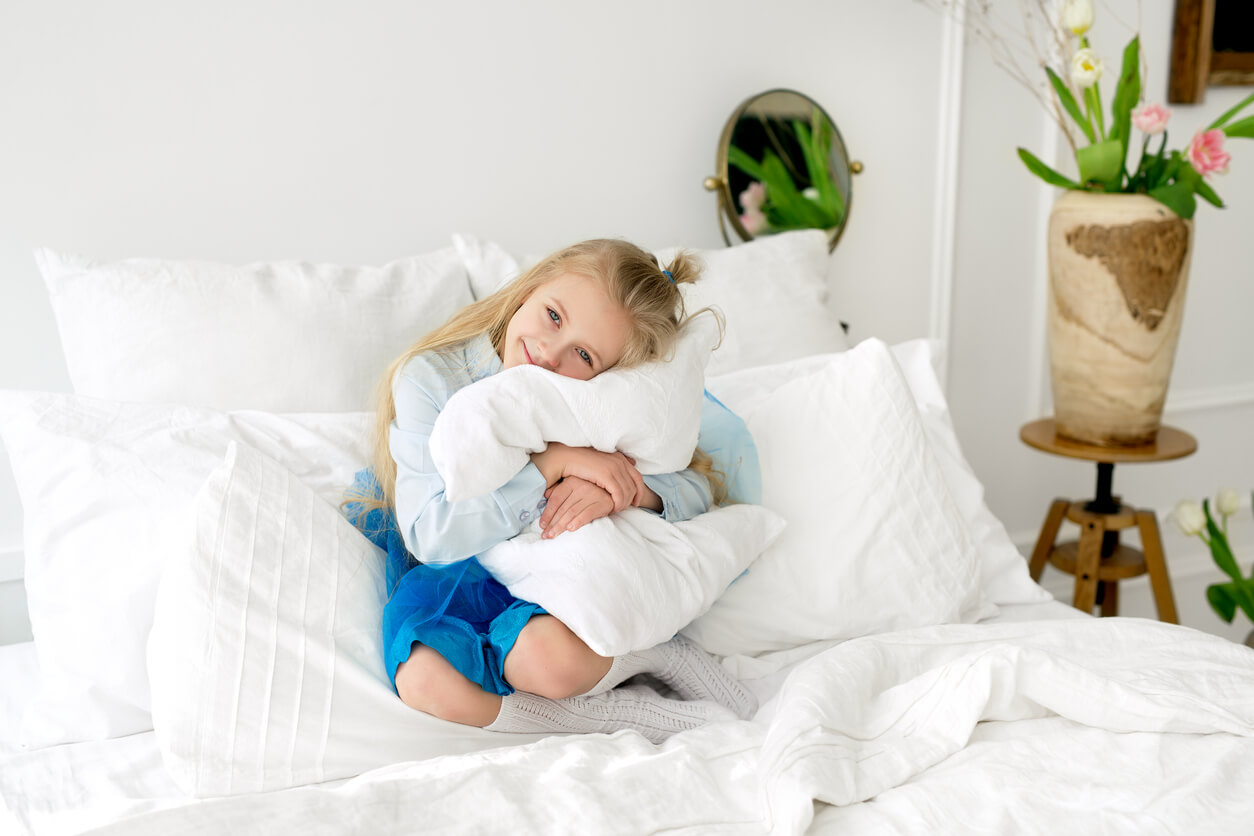Why Are Attachment Objects in Childhood Important?


Written and verified by the psychologist Elena Sanz Martín
Many young children have an object that they can’t be without. This may be a stuffed animal, a toy, or a blanket. Infants carry them everywhere, need to have them in sight at all times, and develop a very special bond with them. Have you noticed this habit in your children? If so, we want to talk to you about the importance of these attachment objects so that you don’t make any common mistakes regarding them.
Having a transitional object is very common during early childhood and is part of normal evolutionary development. In fact, it’s estimated that about 70% of children have one. Some parents worry about their child’s apparent dependence on this element. However, they should know that it plays a fundamental role in the child’s emotional growth.
What’s an attachment object?
An attachment object is any material item to which the child attaches and which provides reassurance and comfort in challenging times. This term was introduced by the pediatrician and psychoanalyst Donald Winnicott, who points out that this is the first possession that a child recognizes as something separate from themself.

What are the characteristics of attachment objects?
Attachment objects have some particular characteristics that you should be aware of. We’ll show them to you below:
- They have a pleasant texture: They’re usually soft and warm. For this reason, it’s common for many children to choose stuffed animals or blankets. This is related to the soft mother theory, according to which infants tend to attach themselves to figures with these characteristics in order to find comfort and protection.
- They’re arbitrarily and freely chosen by the child: Parents can’t impose an object of attachment. Therefore, even if it seems to you that your child has much nicer or newer toys, their attachment object needs to be the one of their choosing.
- They’re irreplaceable: If your child loses their attachment object, they’ll suffer great sadness and no other type of toy will be able to replace it, not even one that’s just like the one they had. This object of attachment has a very special value. In fact, in an experiment carried out with infants in which they were offered a supposedly new object cloned from the initial one, most of them decided to keep the original.
- The infants’ attitude toward the object isn’t one of play, but of possession: They suck it, bite it, throw it, or hug it. In general, they don’t use it to play or have fun as they may do with other objects.
- It has a particular smell: This helps the infant to sense it as familiar. For this reason, it shouldn’t be washed.
- The child carries their attachment object with them everywhere: They don’t separate from it and it can be especially necessary in times of stress, grief, or when it is time to go to sleep.
The important function of attachment objects
This toy or element is fundamental for the child in their psychological maturation. In the beginning, babies perceive themselves as a whole with their mother, and the process of identifying themselves as individual beings can be complicated. This is when this element helps with the transition. Attachment objects calm separation anxiety and allows the child to keep and carry with them part of the affection and protection they receive from their mother when she’s not available.
Thanks to this object, the child can become progressively more independent and face certain challenging daily situations. In short, it provides comfort and security to face tensions and difficulties without the presence of their attachment figures.

How long do attachment objects last in children’s lives?
Perhaps, as a mother, at some point, you’ve considered taking away your child’s attachment object. Perhaps out of fear that they’ll become overly dependent on it or because you think that they’re too old to have it. However, it’s vitally important to respect the child’s timing and understand that the object plays a role in a process.
Attachment objects are usually established between four and six months of age and accompany the baby until about three to four years of age. As the child matures and gains in security, this accessory becomes a simple function of play and begins to play a smaller role in their life, as they no longer need it. Even so, it’s possible that in certain conflictive situations, such as parental divorce or the arrival of a sibling, they may resort to it again.
In any case, each child is different and must be allowed to progress at their own pace. When your child’s ready, they’ll naturally let go of this attachment object. Until then, allow them to enjoy its benefits.
All cited sources were thoroughly reviewed by our team to ensure their quality, reliability, currency, and validity. The bibliography of this article was considered reliable and of academic or scientific accuracy.
- Harlow, H. F., & Zimmermann, R. R. (1959). Affectional responses in the infant monkey. Science, 130, 421–432. https://doi.org/10.1126/science.130.3373.42
- Winnicott, D. W. (1967). Objetos y fenómenos transicionales : Un estudio sobre la primera posesión no Yo.
This text is provided for informational purposes only and does not replace consultation with a professional. If in doubt, consult your specialist.








